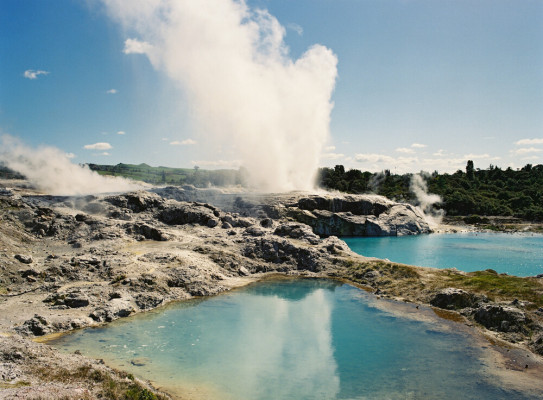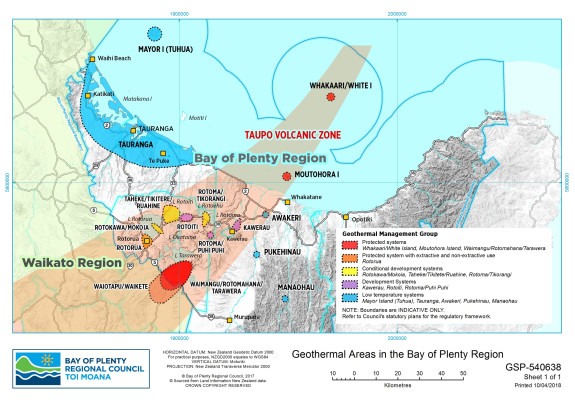Vital 'care plan’ established for Rotorua Geothermal System

On 19 April 2024, Toi Moana Bay of Plenty Regional Council approved the Rotorua Geothermal System Management Plan (SMP) Ngā Wai Ariki o Rotorua He Mahere Whakahaere Pūnaha.
This plan will help ensure a sustainable future for the Rotorua Geothermal System, and guide the protection of its vulnerable and unique geothermal surface features.
A vision of health
Working with tangata whenua, consent holders, the community, stakeholders, and GNS Scientists, Bay of Plenty Regional Council have formalised a new 'care plan' for the Rotorua Geothermal System.
The plan outlines our shared vision for the future, "Ka ora te mauri o Ngā Wai Ariki o Rotorua. The Rotorua Geothermal System is healthy".
Vital and powerful, but fragile
Though immensely powerful and valuable, the fragility of the Rotorua Geothermal System has been widely documented across mātauranga Māori, scientific and historical understandings of the system.
Strong signs of the system's deteriorating health were observed during the 1970s. During this period, uncontrolled extractions of geothermal fluids degraded the system to the point that many springs stopped flowing, some drying out, and geysers like Waikite and Papakura geyser ceased to erupt.
The system's decline instigated a protection and recovery plan in 1980s, and over the past 40 years, the system has largely recovered and stabilised. However, some features have not, and may not fully recover.
Monitoring, management and protection
Currently New Zealand’s geothermal systems are managed under the Resource Management Act 1991. Under the Act, Bay of Plenty Regional Council has responsibility for
- The taking of geothermal water, heat and energy and geothermal water and geothermal discharges to land, air and water
- They also have a role in the protection of significant surface geothermal features and avoidance and mitigation of natural hazards.
The new 'care plan' has drawn on extensive research and monitoring to identify and cover the gaps in the management of the Rotorua system.
To form the evidence base for the plan, Bay of Plenty Regional Council engaged a GNS team of multi-disciplinary specialists, who compiled decades of geothermal research, monitoring and climate data from the region. By combining this data with analyses of the surface geothermal features, we have created a much deeper understanding of the shallow and vulnerable portions of the Rotorua system.

The links between aquifer water levels, springs, pools, geysers, lake levels, groundwater and rainfall are now much better recognised - which can be now used to better monitor vital signs of the Rotorua system.
GNS Scientist Robert Reeves said, "There has been two pieces of geothermal geophysics that have help shaped the SMP care plan. These are the deep geophysics obtained by our Magnetotelluric team which has mapped the geothermal plume rising from below 7 km depth which feeds Rotorua's famous surface geothermal features. The second was the development and then refinement of a mathematical model. The model has drawn on a large multidiscipline data base that ranges across geophysics, geology, drilling data, chemistry, surface features and monitoring data."
Now Bay of Plenty Regional Council has a model they can use to test and predict the potential effects of geothermal use and development, and that geothermal allocation is sustainable.
Brad said this research will benefit systems beyond Rotorua's geothermal system, "The other rewarding aspect is we developed a methodology to characterise geothermal feature types, establish significance criteria and classes and then rank the surface geothermal features for significance. This work will help provide evidence to about the values placed on the surface geothermal features."
What's next?
The Rotorua Geothermal System Management Plan (SMP) will be used to guide and inform changes to the Regional Natural Resources Plan (RNRP) and the Rotorua Geothermal Regional Plan (RGRP) later this year. These plan changes are part of a regular review process under the Resource Management Act (RMA) to make clear how the geothermal (ngāwha) resources of the Rotorua Geothermal System are to be used.